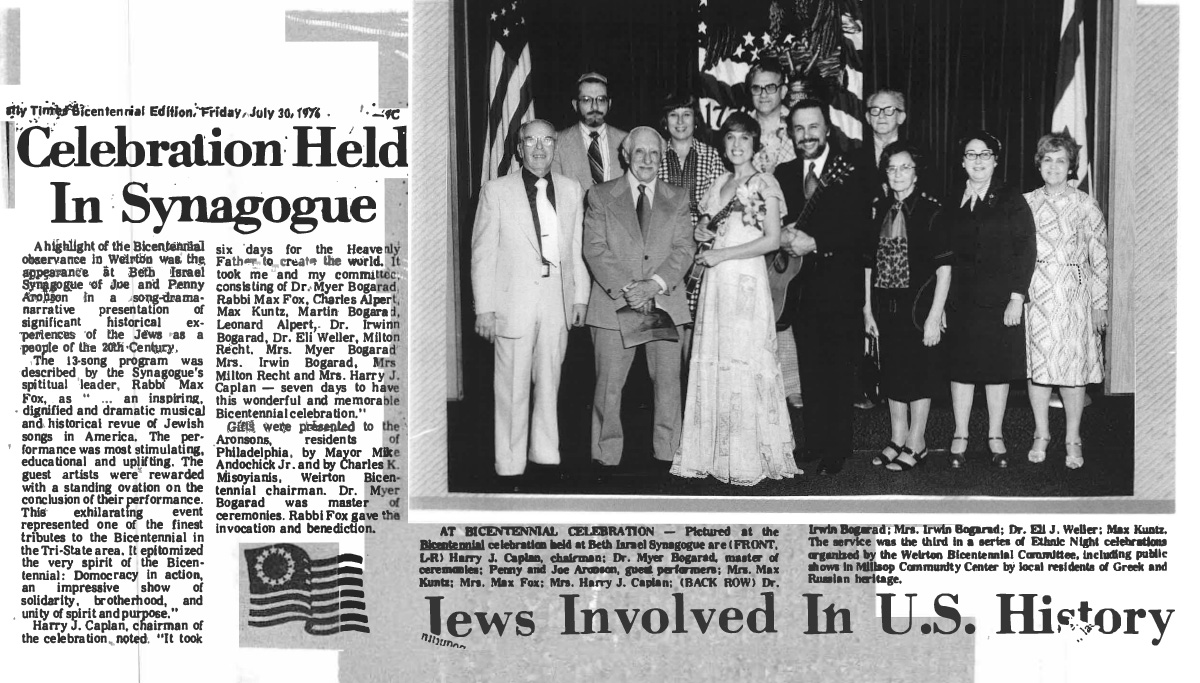The JCBA was created in 1992 with the merger of the Hebrew Burial Association of Pittsburgh (originally called Chesed Shel Emeth of Pittsburg) and the United Jewish Federation Cemetery Association, and incorporated on June 4, 1910 .
Click to view an interactive map of all JCBA owned and associated cemeteries listed below.
Agudath Achim Cemetery — Beaver Falls, PA
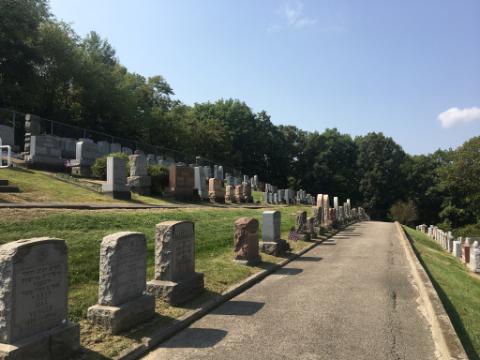
Located in Patterson and White Townships it is the only Jewish cemetery in Beaver County, other than the Steinfeld (Tree of Life) cemetery in New Brighton PA and holds the remains of those from Midland, Aliquippa, Rochester, Beaver Falls, New Brighton, and West Aliquippa, all towns with former Jewish communities.
Agudath Achim Congregation was formed in Beaver Falls about 1879. The synagogue was built at Fifth Street & Sixth Avenue in Beaver Falls between 1912-1914. The congregation later moved to New Brighton and then Chippewa.
Six acres were purchased by the congregation in 1906 for a cemetery. Through the years, as the need arose, land was cleared and landscaping and walks were installed. A memorial to the Holocaust is on the grounds and adds meaning to the cemetery.
Adjacent to Agudath Achim Cemetery is a family cemetery formerly owned by the Solomon/Salmon family. That cemetery was deeded to Agudath Achim in 1992, with the assistance of Barris Siegel, Esq. The Rauh Jewish History Program and Archives houses the original incorporation documents.
Notable burials include:
Three spiritual leaders – Rabbi Shlomo Amsterdamsky who died at age 30 in 1929 while serving the community; former Beaver Falls Rabbi Myer Asper who passed away in 2007; Rabbi David Shapiro who had a fifty year rabbinic career passing away in 2004.
Judge J. Quint Salmon, former Senior Judge of Beaver County lies at rest here as well, passing away at the age of 101 in 2009.
Howard Strauss of Monaca enlisted in the US Marine Corps in Pittsburgh on December 30 1964. Serving in Vietnam with Company E, 2nd Battalion his unit was on patrol in the mountains west of Huong Hoa. On October 26, 1966 harassing mortar fire was being deployed by the Marines when a round fell short of its target exploding within the patrol killing 18 year old PFC Strauss.
The cemetery is located at 1819 21st. St., Beaver Falls, PA.
Agudath Achim Cemetery, with funds housed at the Jewish Federation of Greater Pittsburgh’s Jewish Community Foundation has been a longstanding and valued donor of the JCBA. Pictured below: Beaver Falls Trustees Betty Mae Siegel, Nathan Ortinberg, Beverly Greenberg
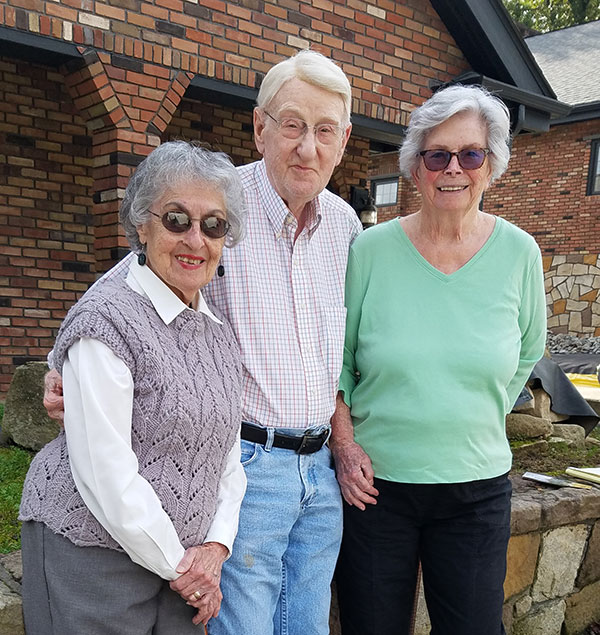
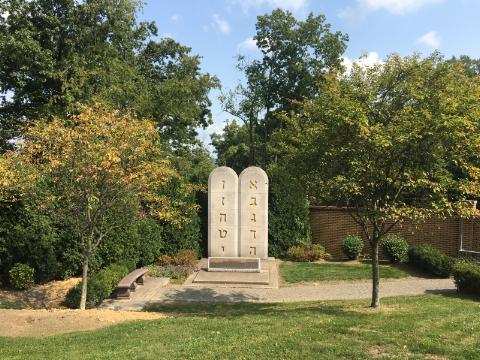
Agudath Achim Cemetery — Gibsonia, PA
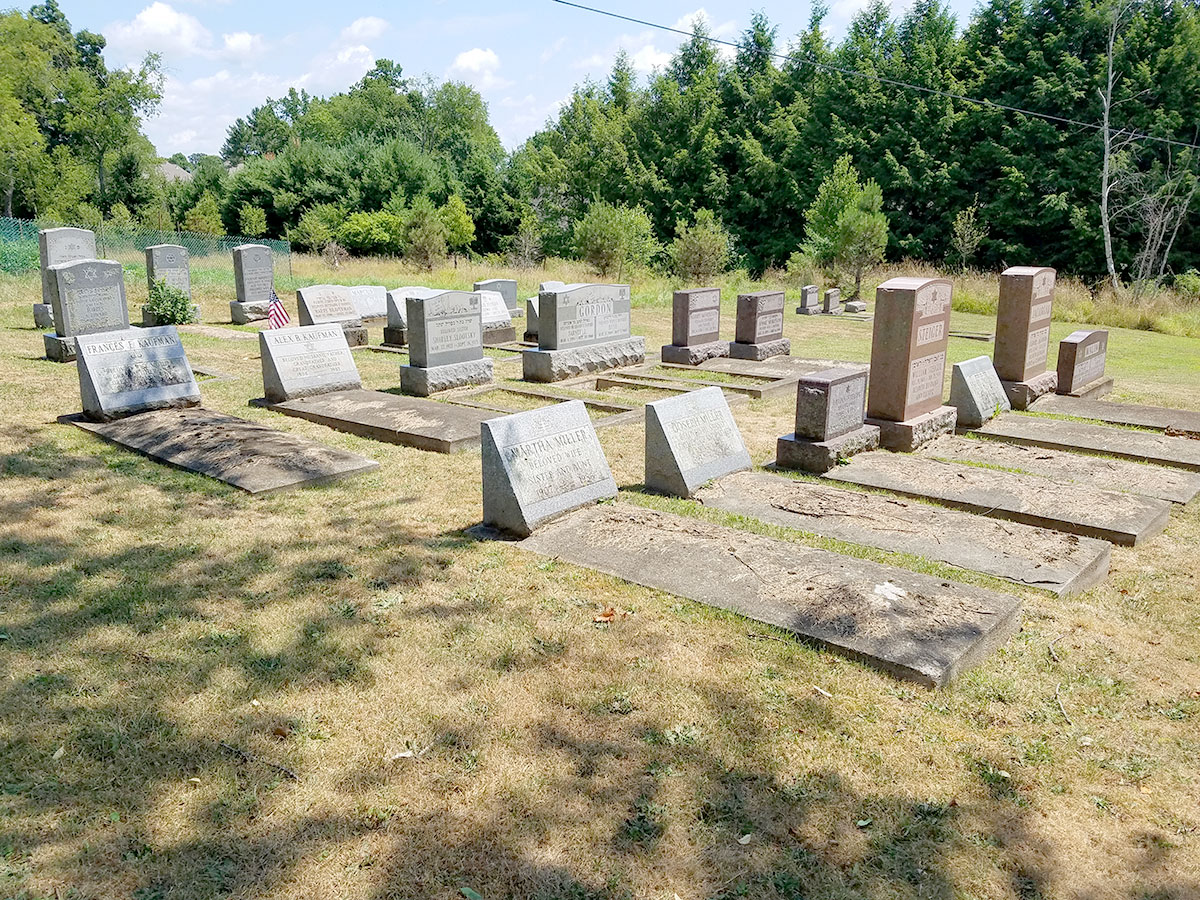
Agudath Achim Congregation was founded in 1921 in the Hill District. The congregation celebrated its founding at the home of Simon Ronick on Herron Ave. with speakers including Rabbis Ashinsky and Friedman, and Pittsburgh City Councilman James Malone Its cemetery is on Wickline Road in Hampton Township. They became a JCBA cemetery in 2009.
Ahavas Achim — McKeeesport, PA
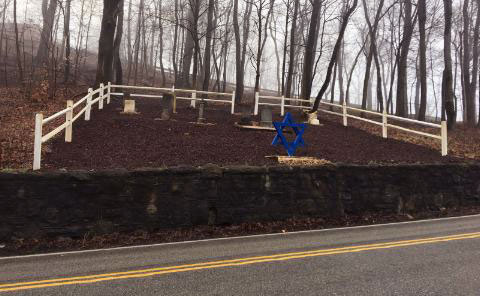
Also known as the “Rippel Road Cemetery” its roots go back to a group of non-Hungarian Jews that were originally a part of McKeesport’s Anshe Ungarn (Men of Hungary). More comfortable within their congregation, they formed Ahavas Achim in 1892. They remained separate for approximately 30 years, with the last burial being in 1924. Eight headstones remain, and the cemetery was carefully restored in 2017 by Mark Pudlowski, a White Oak PA faith leader with the able assistance of Boy Scout Daniel Lia who chose the site for his Eagle Scout project. The Jewish community is appreciative of the efforts of these two men. The JCBA assumed maintenance of the Ahavas Achim Cemetery in mid-2020. It is located on the north side of Rippel Road just before Center Street in White Oak.
Ahavath Achim Cemetery — Kennedy Township, PA
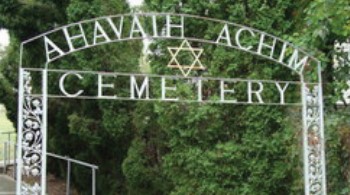
High above the Ohio River, down river near Chartiers Creek, sits a symbol of the growth and success that was McKees Rocks. Ahavath Achim “Brothers of Love” Cemetery represents the Jewish community that originated in ‘The Bottoms’, a low lying area along Munson Avenue where the shul stood next to the Roman Catholic church, which was next to the Russian Orthodox church. A Pre-WW I melting pot.
Jewish hucksters and peddlers had arrived as early as 1892, most from the Hill District. During the period from 1900 to 1910, the growth rate in the Rocks was eight times that of Allegheny County as a whole. This railroad hub, with the Pittsburgh and Lake Erie Railroad yards nearby, was key to the area’s growth. The earliest burial on this hillside cemetery on Green Oak Drive, adjacent to Pliskover Cemetery, dates back to 1901, two years before the shul was founded. 300 graves have been well kept and maintained, behind a decorative iron gate, by the Slomberg and Jacobs families, and others of the proud Ahavath Achim Association.
Never having more than 330 Jewish residents, McKees Rockes was small but mighty, as the police chief, fire chief, and mayor were all members of Ahavath Achim. Before WWII the community had a fulltime rabbi and kosher butcher. The congregation closed in the late 1950’s with many families moving to Squirrel Hill. The cemetery has kept them together.
Notable burials include Joseph “Yussy” Thompson, Police Chief; Fire Chief Hyman Jacobs; and David Hershman, Mayor of McKees Rocks. Few Jewish communities, if any, can claim this.
Another notable burial is that of Art Simon, a former Churchill High grad and University of Pittsburgh football player who was killed in 1987 at the age of 35 while leading co-workers in defense of a robbery at a Michigan restaurant. A second-team all-state defensive lineman and member of the Big 33 team, Art Simon never forgot his roots, and volunteered his time with the Churchill program during his adult years.
Ahavath Achim began an association with the JCBA in 2023.
Anshe Lubovitz Cemetery

The roots of Anshe Lubovitz are in the Russian town of Schedrin. This special seat of Jewish learning became a government center and region of commerce. It thrived for over 100 years, with a Jewish population of over 1,400. All were killed during the Holocaust.
Yosef Chaim Weiner arrived on the Hill from Schedrin in the early 1900’s, and brought a Torah with him. The first minyan was started above a grocery store on Center Avenue. From there Anshe Lubovitz took a home on Roberts Street in 1907. Yosef Weiner was president when they felt the need to establish their own cemetery. Land in Shaler Township was purchased in 1910, and unfortunately for Weiner, it was none too soon. He passed away in 1911, and was the first burial at the cemetery.
Other notable burials include Reliable Luggage Company founder and patriarch Samuel L. Weiner, who passed away in 1973. He was a leading member of the New Castle Jewish community and a distinguished member of Tifereth Israel, and Nathan Liff, Pittsburgh boxer, trainer and manager, who passed away in 2000. Anshe Lubovitz is on Oakwood Street in Shaler, and joined JCBA in 2020.
Bes Almon & West View Cemeteries — Reserve Township, PA
The Bes Almon Cemetery is the final resting place for Pittsburgh’s first Jews. In the 1840s, the Gateway to the West was both a jumping off point into the nation’s growing interior and an emerging industrial center for the East. These pioneers came here to start businesses, families, and a new Jewish community. The cemetery, established in 1847 with a $300 purchase, is Jewish Pittsburgh’s oldest, with a commemorative plaque dedicated to its history. Situated at the corner of Mt. Troy Road and Lonsdale Street, Bes Almon is directly next to the Reserve Township municipal building. The earliest burial is 1848, and visiting the cemetery is a must stop for anyone interested in the region’s early Jewish roots.
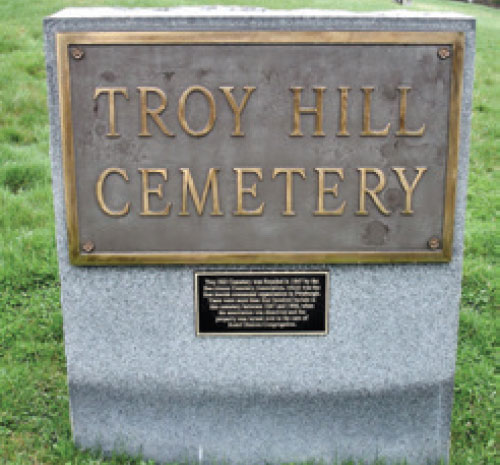
The founders of the Bes Almon Burial Society later became leaders in Shaare Shamayim Congregation and its successor Rodef Shalom Congregation. The Bes Almon Society remained an independent entity for years. Its earliest known by-laws date from 1869. Early translations of Bes Almon are the “Mourner’s House”, the “House of the Widower”, even the “House of Eternity”. To the locals, it’s the Troy Hill Jewish Cemetery. The Society transferred the property to Rodef Shalom in 1906, and this noted congregation has lovingly cared for the ground ever since.
A cradle of early Pittsburgh Jewish history, Bes Almon holds the remains of Captain Jacob Brunn. A Civil War veteran, Brunn volunteered April 1861, barely a week after the first shots were fired at Fort Sumter. He made the ultimate sacrifice at the Battle of Williamsburg, a short and intense battle. A Prussian native, Captain Brunn was the first officer from Pittsburgh to die in the Civil War. His death in Virginia on May 5, 1862 brought the war home to Pittsburgh. The entire city turned out for the funeral, people of all faiths to honor this young captain (age 33).
Before the war, Brunn was a salesman and an interpreter for the Allegheny County courts, probably arriving in the area in the early 1850’s. Bes Almon officials posthumously awarded him honorary membership, and paid his funeral expenses. Brunn’s soldiers, captured at Williamsburg, were released in time to be his pallbearers. He is one of the approximately 400 interred on Troy Hill, a testimony to the region’s early German Jewish community. Full records are held within the extensive archives at Rodef Shalom.
Four miles north sits the successor to Rodef Shalom’s first burial ground. Dedicated in 1880, West View’s 110 acres are one of the region’s finest maintained cemeteries. With many of Pittsburgh’s Jewish elite buried here, a short list includes former Pirates owners Barney Dreyfuss and Bill Benswanger, US Congressman Henry Ellenbogen, and many members of the Kaufmann Family.
Accessed on Cemetery Lane just east of I-279, the gently rolling hills within the cemetery lend to its tranquil setting. An on-site greenhouse provides plantings for both the cemetery, and for Rodef Shalom’s Biblical Botanical Garden, another must see for area tourists. A community mausoleum, along with a section set aside for burials that comply with green standards, are on the grounds. West View holds over 5500 graves, and is the second largest Jewish cemetery in Western Pennsylvania. A stroll through the cemetery’s many well kept lanes are like a walk through Pittsburgh Jewish history. Numerous family mausoleums dot the northern portion of the cemetery, amidst a giant stand of mature trees.
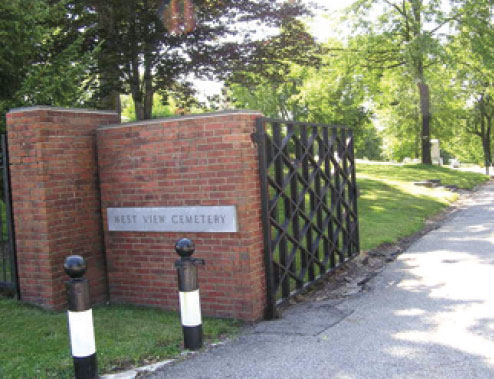
Both Rodef Shalom cemeteries are guided by the congregation’s active Cemetery Committee, and in coordination and cooperation with the JCBA.
Beth Abraham Cemetery
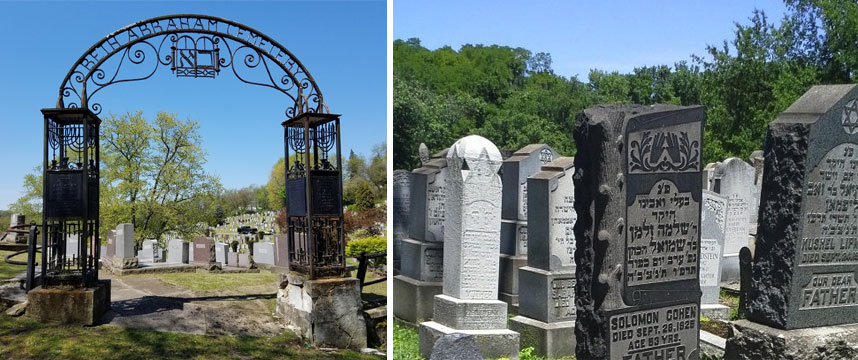
Beth Abraham Cemetery is located at the very edge of the Carrick section of Pittsburgh on Stewart Avenue. According to some accounts the cemetery was located here when the area was Baldwin Township, a separate municipality, and Jewish cemeteries were forbidden to be located in the City of Pittsburgh. In 1888, Russian Jewish immigrants formed a small Orthodox congregation known as Beth Abraham in Pittsburgh’s Hill District. The synagogue existed from the 1880s until the 1940s when the Jewish people began to move off the Hill. The Congregation’s archives collection, housed at the Rauh, consists of several boxes of records including ledgers. These are primarily in Yiddish.
The history of the cemetery is explained by the late Arlene Adelman, past president of the Beth Abraham Congregation Cemetery, which turned the cemetery over to the JCBA in 2010. “The Polish, Romanian, and Spanish Jews all had their own synagogues in the Hill District. The Russian Jews built Beth Abraham at 23-25 Miller Street. We purchased six plots of land, over time, next to each other at until we have what now exists in Carrick. The cemetery was incorporated in 1889. However, the first burial was actually in 1883. There is a very old baby section where still-born babies and infants are buried.
In 2011 photographs by Devon Christopher Adams were displayed at the Carrick Carnegie Library of Pittsburgh. The Carrick Overbrook Historical Society was also involved in displaying 28 black and white photos from the Adams Collection.
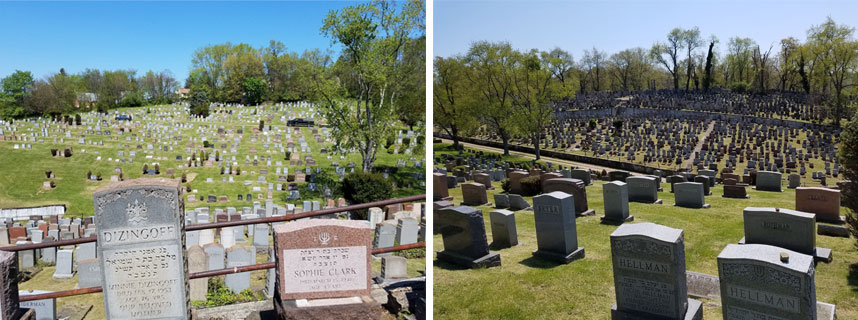
B’nai Israel Cemetery — Steubenville, OH

Jews settled in Steubenville, Ohio and in Weirton, West Virginia in the mid-19th century. On the Ohio River, these towns became thriving centers of the steel industry. Within the region, a robust Jewish community flourished as well, on both sides of the Ohio. Weirton’s Jewish community formed Beth Israel Synagogue in 1917, dedicating a new building in 1929 at the corner of West Street and Virginia Avenue. Originally an Orthodox congregation, it became Conservative over time. Long before chain stores, Weirton had no less than forty Jewish owned grocery stores. According to Sharon Bogarad, raised within a longstanding Beth Israel family, “Weirton was a special place to grow up. It was a madras of nationalities and faiths”. She proudly maintains the congregation’s records.
A highlight of the region’s Bicentennial observance was an inspiring musical program held at Beth Israel Synagogue. It was considered one of the finest tributes to America in the Tri-State area. Rabbi Max Fox was the spiritual leader at that time. The congregation closed in 1990 and Temple Beth El and B’nai Israel Congregation, merged to form Temple Beth Israel.
Jews from Weirton have long been involved with the Steubenville Jewish cemetery. B’nai Israel contains burials from Weirton and East Liverpool, and from the large conservative shul in Steubenville. Temple Beth Israel was central to a community that numbered over 400 Jewish families. As the area’s population declined, the Jewish community’s population declined even more. Its doors closed in 2013. The Tikkun Olam Scholarship of Temple Beth Israel, through the Community Foundation for the Ohio Valley, continues funding scholarships to support students in the health professions. A book with burial information is available at the Steubenville and Jefferson County Public Library.
The cemetery remains as a tribute to the Jewish communities of Weirton and Steubenville. Located on Sunset Boulevard in Steubenville, B’nai Israel became a part of the JCBA in 2015.
Hebrew Burial Assocation — Chesed Shel Emeth

The Hebrew Burial Association (also known as Chesed Shel Emeth of Pittsburg) was organized ca. 1853 to provide Orthodox burials for the deceased of indigent families. The Association was among the original beneficiaries when the Jewish Federation formed in 1912. Extensive records of the Hebrew Burial Association are housed within the Rauh Jewish Program and Archives.
The Association’s “Old Cemetery” Chesed Shel Emeth on Seavey Road in Shaler Township was founded by the Shaare Shomayim Congregation, possibly following a dispute with the older Bes Almon Cemetery, still in existence on Mt Troy Road in Reserve Township. Chesed Shel Emeth was eventually overseen by the association. The gate, pillars and arch were restored in 2021.
The grounds for the “New Cemetery,” located on Oakwood Street, also in Shaler Township, were purchased in 1913 and is still in use. Four separate burials of damaged prayer books and other sacred texts, a service provided to the community by the JCBA, were held in 2007, 2013, 2018, and 2021.

Holy Society Cemetery — Uniontown, PA
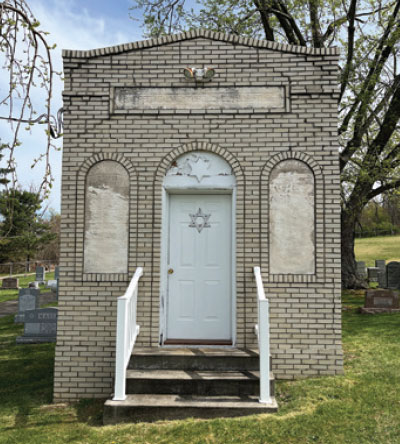
The days are long gone when Uniontown’s B’nai B’rith young men’s softball team won the 1949 Fayette County championship. This once thriving Jewish community now represents the largest number of Jewish graves in Western Pennsylvania with the least number of Jews. The size of the area’s once thriving community can best be seen at Holy Society Cemetery, one of the finest maintained Jewish cemeteries anywhere, with over 550 graves in a lovely tranquil setting.
Holy Society’s congregation, the Tree of Life, was founded in 1901 as an Orthodox congregation. By the mid-1920’s over 1000 Jewish residents called Uniontown home. A Reform congregation, and Jewish Community Center, long shuttered, round out the remaining infrastructure that still can be seen along the main route through town. A sandstone sculpted memorial to the Holocaust remains on US 40. The Tree of Life closed in 2015, running out of members but not of the spirit that kept these families close with one another.
The natural resources under the Keystone State resulted in over fifty communities in Western Pennsylvania with sizeable business districts, and each with over 100 Jews. Uniontown was at the center of numerous Jewish populations in Southwestern PA. Burials at Holy Society are from Connellsville, Masontown, Brownsville and Clarksburg, West Virginia.
Holy Society Cemetery, located in Hopwood near Uniontown, is easy to locate as signage marks the route from US 40. The Holy Society Cemetery began an association with the JCBA in 2022.
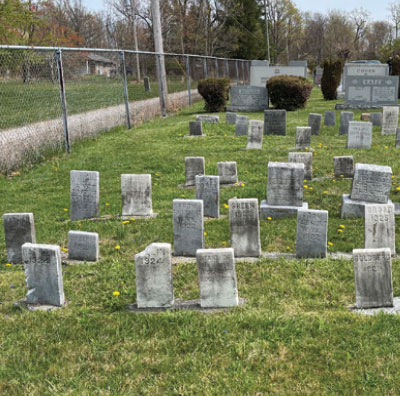
Kesher Israel — Port Vue, PA
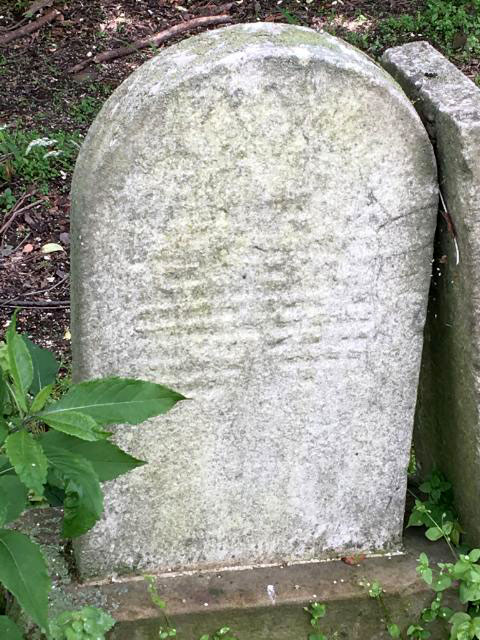
The Kesher Israel Cemetery is adjacent to the Calvary Cemetery in Port Vue and sits between Dersam Street and Fern Alley. The ground was purchased in 1907. The congregation was formally consecrated in 1910 and located on Mulberry Street in McKeesport. Rabbi Weinberg was their longstanding leader. Kesher Israel merged with Anshe Sfard in 1935. Twenty graves, some marked only with numbers, have been cared for by a dedicated neighbor since 2004. JCBA has assumed maintenance and care beginning in mid-2020.
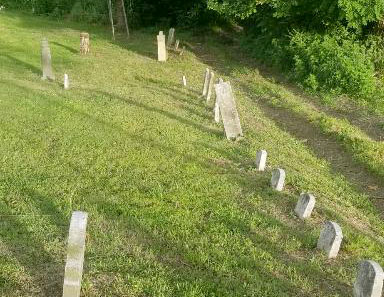
Johnstown Jewish Cemeteries
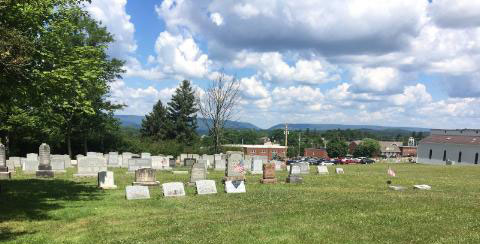

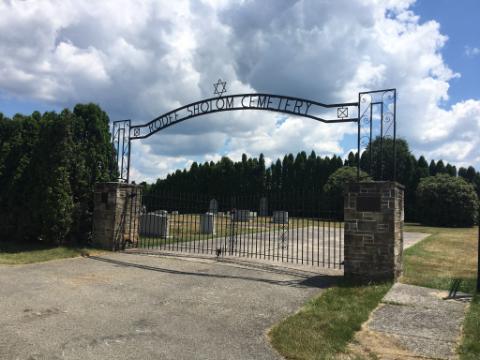
Four separate parcels within Southmont’s Grandview Cemetery, along with two more in Geistown make up the Johnstown Jewish Cemeteries. Dating back to 1885 when Grandview was formed, the Jewish Burial Association’s ground is in the oldest section of one of Pennsylvania’s largest cemeteries. Directly next to Johnstown’s 1889 Flood Unknown Plot, it represents the early German Jewish community and Johnstown’s first families. Hyman Kaminsky, Johnstown’s first rabbi, is buried here as are flood victims. Solomon Holzman, a key figure in the early Jewish community is here along with Nelson Elsasser, former Chamber of Commerce President and community leader.
Rodef Sholom Cemetery in Geistown, just east of the city, was formed in 1906 as part of the first synagogue built in Johnstown. It is the final resting place for Robert Levinson, Spanish American War veteran. Abe Beerman, one of the American Jewish community’s leading benefactors is another notable burial. Rabbi Daniel Lowy, longstanding Wheeling spiritual leader, is here as well, having married into a Johnstown family. Eleven influenza victims from 1918-19 are buried here, many of them children. The Rabinowitz Family Plot is of note for its size, and the cemetery is the final resting place for Johnstown Jewish community scholar and leader Isadore Suchman.
Ahavath Achim Cemetery, in Geistown, formed in 1924 for a congregation of fifty-five families, many produce hucksters, in the Hornerstown section of Johnstown. David and Bessie Kline, cemetery founders; Jerome Cohen, United Mine Worker area physician; and Harry Morrow, longstanding local community leader, are buried here. It holds plots for indigent burials.
The Israel Isaiah Burial Society was formed in the 1920’s, and was given a large section in Grandview’s Edgewood 5. The Glosser plot, representing Johnstown’s largest and most prominent family, sits at its center. Brothers Louis and Moses Glosser each were patriarchs to significant branches. David A. Glosser was central to Johnstown. W. Louis Coppersmith’s grave, former Pennsylvania State Senator, is within this section. Daniel Glosser, a titan of Pennsylvania industry, and key to the formation of both the David A. Glosser Foundation and the Community Foundation for the Alleghenies lies nearby, as does William L. Glosser, the longest serving Jewish Federation President in this most generous UJA community. Joe Goldstein, garment manufacturer and community leader, is another notable burial, as is Saul Spiegel, former newspaper assistant editor and local Jewish historian, and Jess Fridman, Barnesboro businessman, banker, and manufacturer.
Beth Zion’s section is adjacent to this parcel representing the area’s Reform congregation. Dr. Meyer Bloom, a former President of the Conemaugh Hospital Medical Society and key Israel Bonds and UJA leader is buried within this section as is Sam Rappaport, Penn Furniture owner and quintessential UJA Chairman. A second Beth Zion plot also lies within Grandview’s extensive grounds and holds the remains of Leah Rodstein Miller, a decorated WWII nurse, and Louis Goldhaber, killed in action, one of the seven Johnstown Jews to make the ultimate sacrifice during the war.
All records are kept with the area’s remaining congregation, Beth Sholom in Westmont. The Johnstown Jewish Cemeteries became part of the JCBA in 2021.
Kether Torah Cemetery — Reserve Township, PA
In 1907, a group of Orthodox Jews, who had immigrated to Pittsburgh from the Russian province of Volinia, began holding religious services in the home of Solomon Linder (1878-1931) in Pittsburgh’s Hill District. The group formed a small congregation, first called Anshe Volinia. Services were moved to a nearby rented building in 1910 when the congregation had grown to fifty members. For a time the congregation was called Kaiser (Crown of) Torah. Its informal names were the “Ragpicker’s Shul”, and the “Linder Family Shul”. Other names – Kether Torah, Kesser Torah, and Keshe Torah were all used interchangeably.
In 1914, the congregation began to accept members who had no ties to Volinia, and the congregation was chartered under a new name, Keser Torah. With its growing membership, the congregation purchased land to build a synagogue on Webster Ave. and Erin St. in the Hill District. The new synagogue, after support was generously given by the entire community, opened in 1921. A year later, Rabbi Aaron M. Ashinsky (c.1867-1931) was elected spiritual leader and offered a lifetime contract to serve the congregation. Kether Torah is the last remaining 19th century Pittsburgh congregation to pray in nusach sefard, a blend of Ashkenazi and Kabbalistic traditions. This type of prayer book is mandated within the shul’s charter.
After War World II, the population of the Jewish community of the Hill diminished, as Jews continued to move to the Pittsburgh neighborhoods of Squirrel Hill and the East End. By 1957, the congregation changed its name to Kether Torah and moved to 5706 Bartlett St. in Squirrel Hill. It currently worships at 5685 Beacon St. Rabbi Ephraim Rosenblum was their longstanding spiritual leader, and the congregation is now led by his son Rabbi Yossi Rosenblum.
In 1916, a special meeting was held with each member was assessed $50 for the purchase of a cemetery on Hoffman Road in what was then Millvale (now Reserve Twp) from the estate of Joseph H. Heil. The congregation purchased and expanded onto ground fronting Irwin Lane, and totals over 700 graves. It represents one of the highest elevations in the area, and the setting is most serene. Adath Israel, a shul in Oakland was granted a small portion of ground within the cemetery. Norman Rabner served as the longstanding cemetery administrator. Original blueprints and deeds are housed within the Rauh Jewish History Program and Archives.
The founding families and early members stayed close. The Rice and Linder Families were synonymous with Kether Torah. Harry Linder, known as “Aaron Dovid” served as President from the move off of the Hill to Squirrel Hill, passing away in 1973. Charles Rice served out Harry’s term…and then some. He stayed on for over forty years running the shul and devotedly lighting yahrzeit candles for members throughout the year in his home. His brother Frank Rice chaired the cemetery committee passing away in 2006. Duties were ably assumed by George Weiss.
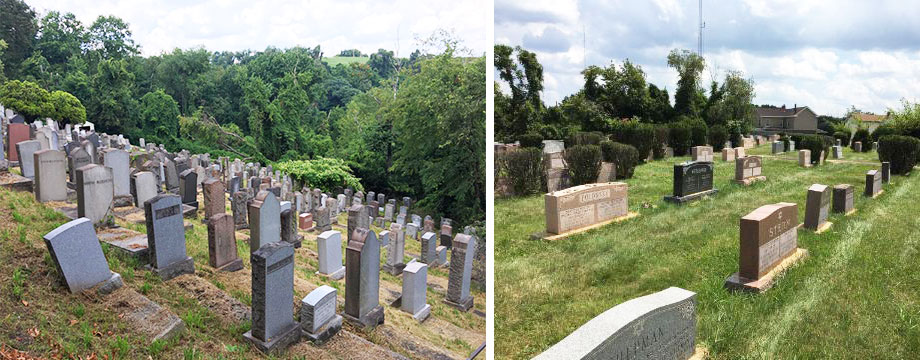
Machsikei HaDas Cemetery
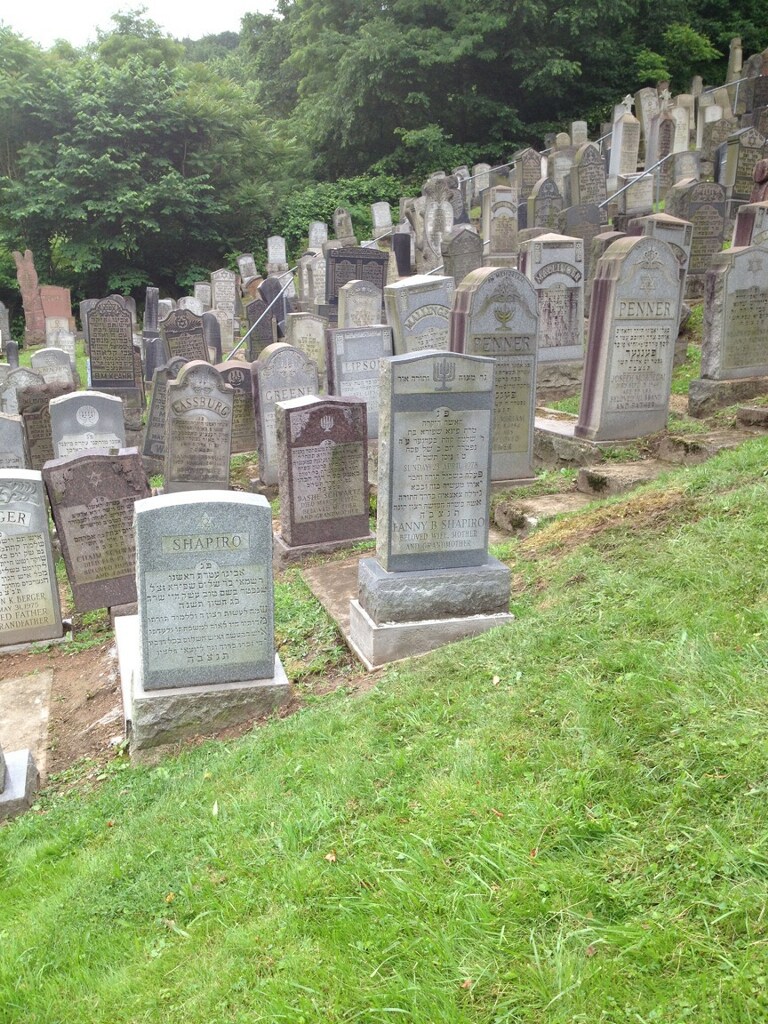
In 1897, twelve immigrants from Galicia, in southeast Poland, organized an Orthodox congregation known as Machsikei Hadas (Upholders of Faith) in Pittsburgh’s Hill District. It was chartered in 1900. The founding members were immigrants from Galicia, which had been part of the Austro-Hungarian Empire, and the Polish Kingdom, now southwest Poland. They came to escape religious persecution and to seek a better life. The “Galitzianers” differed from other Eastern European Jewish immigrants in the Pittsburgh area. They were fewer in number, and being associated with the Belzer Hasidim, they followed the synagogue ritual of the Sephardic tradition rather than that of the Ashkenazic tradition which was prevalent among Eastern European Jewry.
The group first held religious services in each other’s homes and then moved to a rented space on Fullerton Street. Later, members purchased a house at 65 Crawford Street for use as a synagogue. In 1909, a new synagogue was constructed at 1849 Wylie Avenue at the corner of Wylie and Granville Avenues.
By 1917, there were just over 100 family members. Despite its small size, the shul boasted an illustrious succession of rabbis: Rabbi Moshe Shimon Sivitz, who was later associated with Shaare Torah congregation; Rabbi Samuel Zahler; and Rabbi Wolf Leiter.
In 1936, on its fortieth anniversary, the congregation consisted of 114 family members, despite the move of the Jewish population out of the Hill District, a migration that was almost complete by the end of World War II. In 1953 a house at 814 North Negley Avenue, in Pittsburgh’s East End, was purchased for the congregation. The ritual items, such as the Torah scrolls, silver mantles, menorahs, and the pulpit and ark were removed from the Wylie Avenue building, which had been sold to a church, and reinstalled in the congregation’s new home.
By 1986, however, membership had dwindled to 40 families. The congregation disbanded in 1989, and the building was sold. The synagogue’s contents and ark, and archival records were donated to the Rauh Jewish Archives of the Heinz History Center where they are on permanent display. Sidney Santman and subsequently his son Steven Santman maintained the cemetery until 2010 when it was turned over to the JCBA. In 2010, the cemetery came under JCBA’s care.
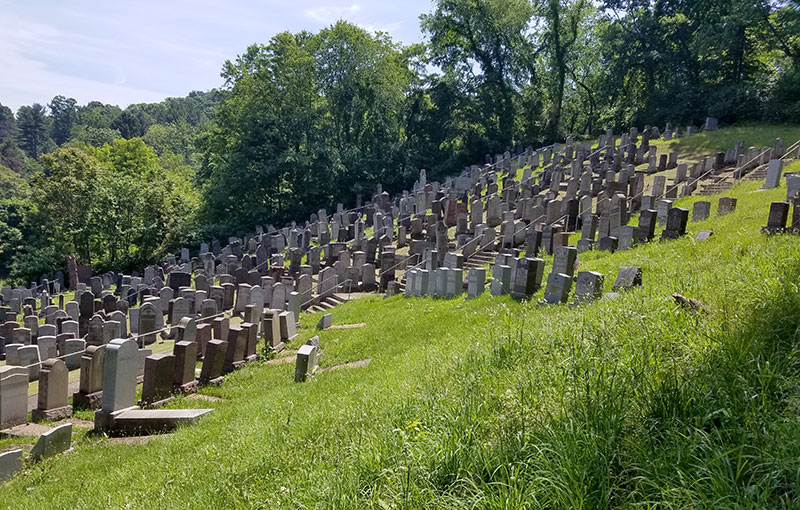
Marks Cemetery

This is a family based cemetery adjacent to Shaare Zedeck. The grounds are surrounded by an early twentieth century chain. The Gomberg Family is well represented. The Marks Cemetery became part of the JCBA in 2010.
Meadville Hebrew Cemetery
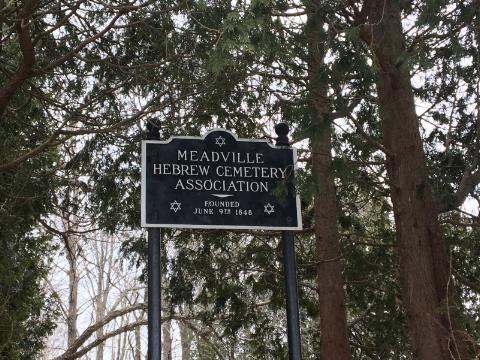
The Meadville Hebrew Cemetery is the second oldest Jewish cemetery in Western Pennsylvania. Established in 1848, just one year after Rodef Shalom’s cemetery in the Troy Hill section of Pittsburgh, Meadville’s Jewish community grew as part of the early canal and railroad days of mid-nineteenth century Northwestern Pennsylvania. Pioneering families included the Ohlmans, Blums, Hilbronners, and Sterns, names that make-up those interred in the small well-kept cemetery adjacent to the other Meadville cemeteries along Jefferson Street just west of town. It was German Jews that first came to Meadville, starting a Sabbath School in 1814. The earliest interment, S.S. Longood in 1848 at age 17 perhaps prompted the community to seek ground, though a deed was not secured until 1866.
That same year, the Meadville Hebrew Society was founded, and the community grew to 120 people and peaked in the 1880’s, only to dwindle by 1895 and close. An Association was formed in 1909 to sustain the cemetery, and the Sterns funded the endowment. The interwar period was good to Meadville. New Jewish families arrived, almost all from Eastern Europe. In 1935, the re-nourished community began regular worship, founded a B’nai Brith Lodge, and charted Temple Israel. In rented quarters until building its own building in 1955, Meadville’s Jewish Community Center is a lovely multi-purpose facility and has long hosted the active Hillel from nearby Allegheny College.
Of note are the towns around Meadville that also had a Jewish population. Conneautville developed around the Beaver and Erie Canal junction at Conneaut Lake. Cambridge Springs, a resort area known for its mineral baths, had kosher hotels through the 1940’s. High Holy Day services were held at the hotels.
Three Jews served as councilmen in the early days of Meadville’s growth, and the longest continuously serving mayor in Meadville’s history was Richard Friedberg. Richard is the longstanding Chair of the Hebrew Cemetery Association.
Two burials of note include Louis W. Ohlman, President of Meadville’s Common Council in the early 1900’s, and Marty Goldberg, Allegheny College soccer, and track and field coach, and USA Track and Field Master Official.
The cemetery remains active, has 85 graves, and became associated with the Jewish Cemetery and Burial Association of Greater Pittsburgh in 2021.
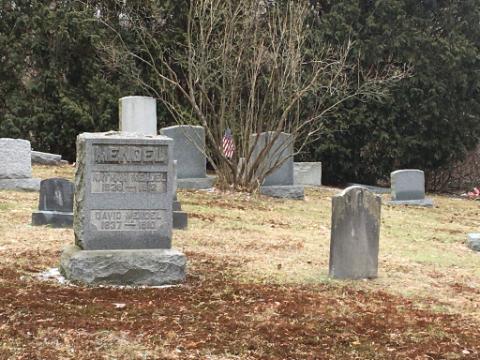
Mount Zion Jewish Cemetery — Franklin, PA
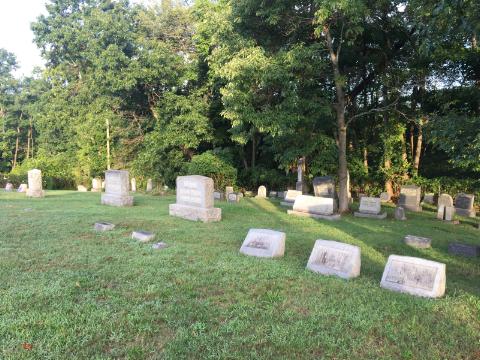
Franklin, PA was settled in the 1740s and named for Benjamin Franklin.
One of the first Jewish settlers, Abraham Burgauer immigrated to Franklin from Bavaria in 1838 and ran a grocery store in the borough until 1868, when he moved to Allegheny City. Moses Koch came to Franklin about 1839 and left for Erie in 1842, becoming an important leader in the city. Early families included the Ulmans and Reizensteins.
With the discovery of oil, the population of Franklin increased dramatically. A group of mostly German immigrants chartered Congregation Emanuel in 1865, the first Jewish congregation in Western Pennsylvania outside of Pittsburgh. Congregation Emanuel dedicated a synagogue on Doe St (now 13th St) during the High Holidays in 1865, with Judge Josiah Cohen of Pittsburgh delivering the keynote address. The community established B’nai B’rith Lodge No. 80 in 1866.
On September 29, 1870, Mt. Zion Hebrew Burial Association of Franklin purchased a one acre piece of property in Sugarcreek Township near Franklin for the cemetery. The earliest dates found are a pair of burials from early 1871. There are a total of approximately 100 graves. A group of twelve men chartered the site in Venango County on November 19, 1895. The charter states that the purpose was to provide a burial location for those of the Jewish faith. Names like Marks, Brown, and Braunschweiger are found throughout the cemetery, with the latter no doubt connected to the Braunschweiger Building on Liberty Street in downtown Franklin. Most burials were well prior to 1940, yet there was a burial of ashes as recently as 2000-2001.
The Jewish population of Franklin peaked in 1873 at 175 people, according to 1970’s historian Jacob Feldman. The need to transport oil from fields in northwestern Pennsylvania to refineries in Pittsburgh created heavy river traffic in the region and allowed many Franklin businessmen to regularly move between the oil region and the urban center to the south. The first two presidents of Congregation Emanuel, Charles Zeugsmith and Abraham Klinordlinger, both moved to Pittsburgh about 1870 and became members of Rodef Shalom.
As oil fields in northwest Pennsylvania were depleted in the 1880s, the economy of the region stalled and many Jewish merchants left the area. The B’nai B’rith lodge merged with a lodge in Corry about 1899. Congregation Emanuel appears to have been dormant through the beginning of the 20th century. In 1915, a new group of residents voted to revive the congregation “after a lapse of nearly forty years” and hired a rabbi. By about 1940, though, Congregation Emanuel had dissolved for a second time and some of its members had joined the Tree of Life Congregation in nearby Oil City.
As the Borough of Sugarcreek grew, its municipal office was built directly across Fox St from Mt Zion cemetery. The cemetery has been wonderfully cared for by the Borough for over thirty years. The JCBA is appreciative and supportive of the Borough of Sugarcreek. Mount Zion records can be searched through the Find A Grave website and through the Rauh Jewish Archives Western PAJewish Cemetery Survey (see the Resources tab).
Ohave Israel Cemetery — Brownsville, PA
There are four cemeteries grouped together south of the intersection of Broad Street and York Street in Brownsville. In the southern corner is the section known as the Ohave Israel Cemetery. Eight tombstones mark the graves. None of those interred lived beyond the age of thirty-three, and some were much younger upon death.
Brownsville’s Jewish community was sizable during the interwar period, and most of the burials took place at the Orthodox Gemilas Chesed Cemetery near McKeesport. Brownsville is somewhat unique in that it had a large Jewish population yet, because of the McKeesport connection, has the smallest Jewish cemetery in Western Pennsylvania.
The synagogue, like many in small towns, became family based as the population diminished, and one of Ohave Israel’s leading families was the Greenfields. Max Greenfield was the last spiritual leader of the congregation. Chartered in 1907 Ohave Israel closed its doors in the late 1970’s. It was listed on the National Register of Historic Places in 2016, is featured on the area’s walking tours, and is in mint condition. Jewish objects were donated to Congregation Beth El in Pittsburgh.
The cemetery land and fund were donated to St. Peter’s Church for perpetual care. The last Chair was Edward Moskowitz. Those interred, 1917-1932, are Joe Barkovitz, Dorothy Davis, Annie Herskovitz, Herman Herskovitz, Eleanor Schwartz, Meriam Stein, Adolph Weisk, and one who remains unknown.
Brownsville’s Ohave Israel Cemetery, supported by a group of concerned friends and in cooperation with the Historic Church of St. Peter and the Brownsville Area Revitalization Corporation, became associated with the Jewish Cemetery and Burial Association of Greater Pittsburgh in 2021.
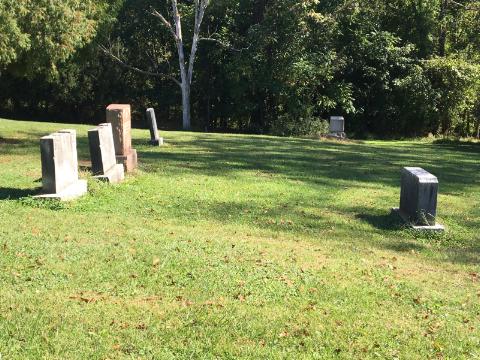
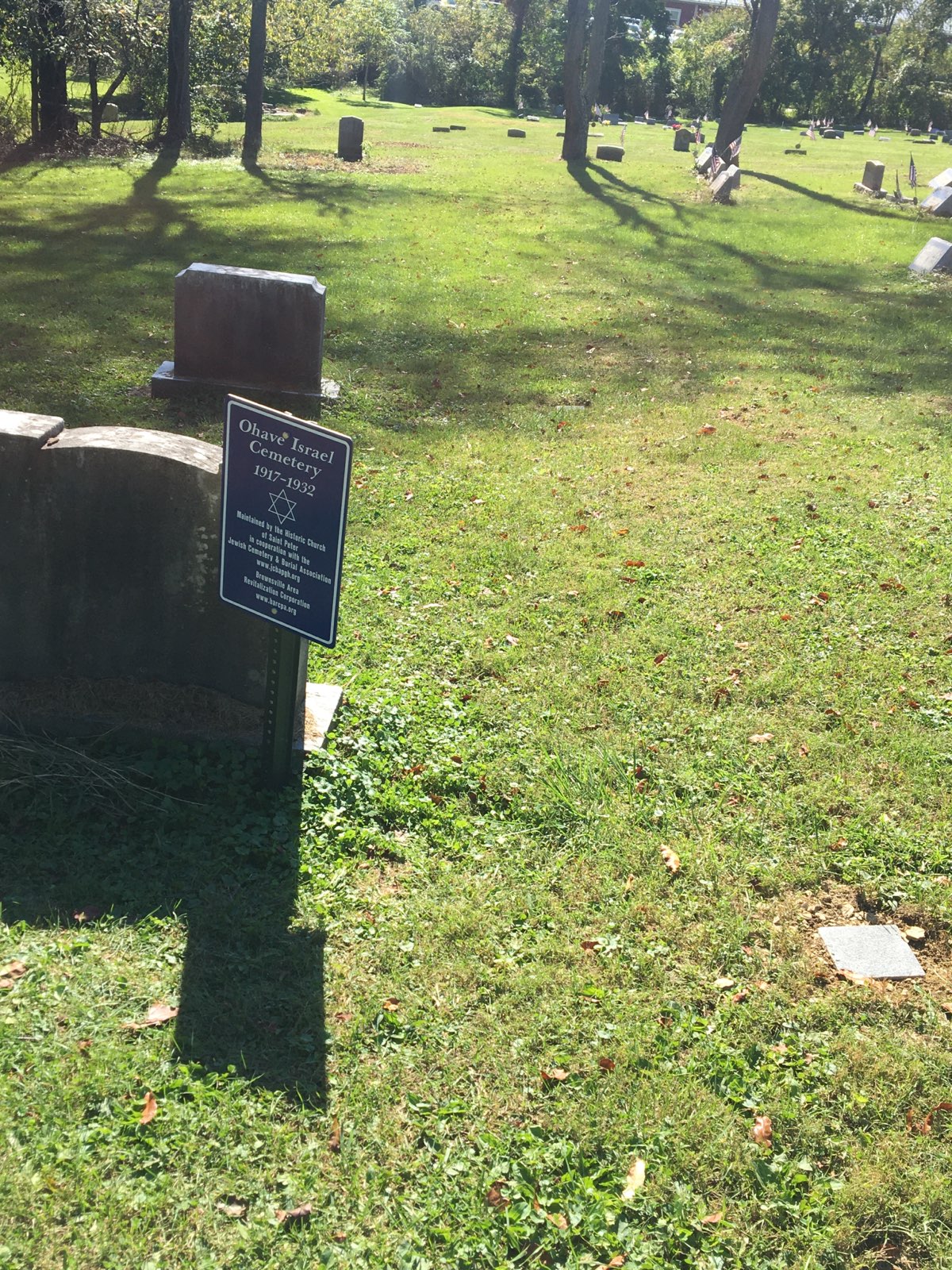
Poale Zedeck Cemeteries
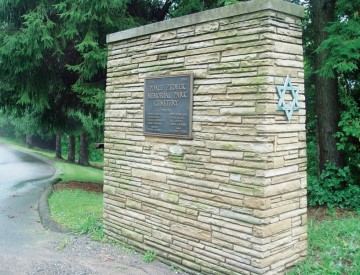
The Austro-Hungarian rooted Orthodox Jewish congregation Poale Zedeck (Workers of Justice) was chartered in 1881, and met in rented quarters at Second and Grant Street. A cemetery in Sheraden was established in 1883. When the congregation outgrew its space, it purchased a house on Federal Street in the Hill District. The house was renovated and served as the synagogue until 1900 when the congregation purchased an existing synagogue building at Crawford and Rose Streets. Members of the congregation also established the Hungarian Sick and Relief Association in 1884 to provide sick, death, and disability benefits to Pittsburgh’s Hungarian Jews.
An early congregational Chevra Kedisha (Holy Society) was responsible for maintaining the cemetery and for memorializing those interred. Founded in 1910, the organization hosted an annual Sudah at which the names of the deceased were read, the cantor recited memorial prayers, and the rabbi gave an address. The concrete pulpit, a unique feature, remains at the center of the Sheraden cemetery’s 875 graves.
In 1926, the congregation purchased a lot at the corner of Shady and Phillips Avenues in Squirrel Hill where the current synagogue was built and dedicated in 1929. The congregation continued to expand and an adjacent building was constructed and dedicated as the Rabbi Joseph Shapiro Education Center in 1956.
In 1954, the congregation established Poale Zedeck Memorial Park in Richland Township, a very well planned out cemetery with now over 850 graves.
Five full-time rabbis have served Poale Zedeck. Rabbi Sol B. Friedman: 1920-33; Rabbi Joseph Shapiro: 1933-74 (Rabbi Shapiro founded Pittsburgh’s Hillel Academy); Rabbi Eliyahu Safran: 1974-85; Rabbi Yisroel Miller: 1985 to 2009; and Rabbi Daniel Yolkut, who began his tenure in 2010.
The Poale Zedeck Cemeteries are owned by the congregation. The hands-on management is a combined effort between Poale Zedeck and the JCBA.
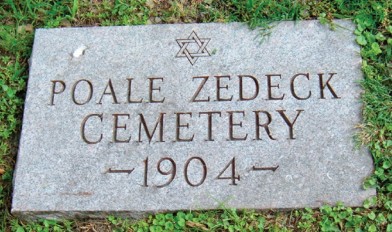
Podolier Cemetery — Reserve Township, PA
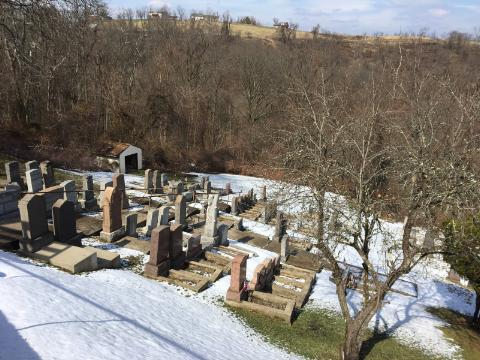
The Podolier Cemetery represents a landsmanshaft, an organization of immigrants from a particular European town that resettled in America. Podolier societies existed throughout the United States to keep those from Podolia “along the valley” Region of west-central Ukraine close to each other and in support of one another. Pittsburgh’s Podolier Society was led by the founders Charles and Ethel Finesman, and generations of Levines that carried on the tradition of maintaining this small and very well kept cemetery sandwiched in between WC #975 to its west and the old section of Kether Torah to its east.
There are 105 graves, with the earliest dating to 1878. Finesmans, Reznicks and Waneticks, all old Pittsburgh names make up a significant percentage of those interred at Podolier. Private First Class Joseph Solomon was killed in action on Aug. 8, 1944.
The Podolier Cemetery will be turned over to the JCBA in 2023.
Shaare Torah Cemeteries
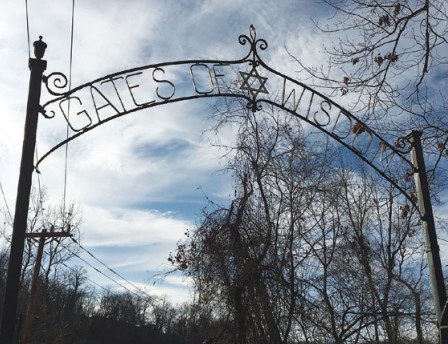
With roots on the Hill going back to the 1880’s, Shaare Torah Congregation was founded in 1889 by a group of Beth Hamedrash Hagodol members in support of their embattled and exiting pulpit rabbi Moses Sivitz. This would begin a forty five year association between one of Pittsburgh’s authorities on Jewish history, customs and traditions and this newly formed, Lithuanian-based shul Shaare Torah, first renting and then in 1909 rebuilding a synagogue at 35 Townsend St. Rabbi Sivitz served the congregation well, passing away in 1936.
Rabbi Baruch Poupko led the move to Squirrel Hill in 1948, and served as spiritual leader until 1996. Succeeded by Rabbi Daniel Wasserman until 2022, Shaare Torah is now led by Rabbi Yitchak Genack.
The Share Torah Cemetery, Pittsburgh’s fourth largest Jewish cemetery, has two sections located at 861 Stewart Ave. off of Rt. 51 in Carrick. The old section, Gates of Wisdom (the original name of the congregation) is on a steep hillside and was consecrated in 1890. The “newer” section is much larger, on more level ground across Stewart Avenue, and was consecrated in 1926. In 1944, the Allegheny County Commissioners designated the cemetery as a final resting place for Jewish war veterans, and JWV Post 49 was involved with the burials of the following men who died in service to their country.
- 1st Sergeant Joe Pearlstein, A career and decorated US Marine; Japan 1943
- Ensign Leon Darling, Esq., US Navy; Italy, 1943
- Private Eugene Kauffman, US Army; Italy, 1943
- Private David Roberts, US Army; France, 1944
- Sergeant Max Marcus, US Army; Belgium, 1944
- Sergeant Charles C. Cohen; US Army; Holland, 1944
- Sergeant Jerome Silverman, US Army Air Corps; Germany 1945
The veteran’s section is quite large, and sits at the center of the cemetery.
Shaare Torah had no shortage of rabbis as members. The cemetery is the final resting place for Rabbis Moses Sivitz, Moses Markowitz, Jacob Helfer, Hyman Lesofsky, and Aaron Gerber. Other notable burials include noted health advocate and rural West Virginia physician Dr. Howard Marcus (1979), and Irv Younger, a well-liked area businessman who was killed while worshipping at the Tree of Life (2018).
Records of the congregation and cemeteries are housed within the Rauh Jewish Archives and as part of the University of Pittsburgh’s Digital Collections. Restoration plans are in the works for both sections, and the JCBA will be assuming ownership of the Shaare Torah Cemeteries beginning in 2023.
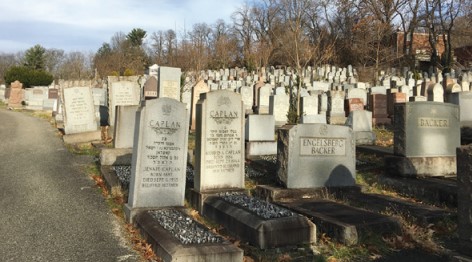
Shaare Zedeck Cemetery

Shaare Zedeck Cemetery is located adjacent to the Beth Abraham and Gates of Wisdom (old Shaare Torah) Cemetery in Carrick. When established, this area was the city of Pittsburgh.
In 1895, several Polish Jewish immigrants, living in Pittsburgh’s Hill District, organized the Shaare Zedeck Congregation. The Orthodox congregation first met and held religious services in a rented property at 7 Scott Street. By 1905, the congregation had grown to 200 members. Property was purchased at 14 Townsend Street where a new synagogue was built, opening in 1907. Rabbi Aaron M. Ashinsky served as the congregation’s first rabbi, and Meyer Ross as the first president. The congregation continued to grow, serving Jews mostly from Polish Russian provinces. The Ershte Warshawer Untershtitzung Verein (First Warsaw Support Society), a benevolent society which aided Polish Jewish immigrants and their families, was headquartered at the synagogue.
By the close of World War II, many Jewish families had left the Hill District for Pittsburgh’s East End neighborhoods. By 1948, Shaare Zedeck had moved to a building at 5831 Bartlett Street in the Squirrel Hill neighborhood of Pittsburgh. In 1974, it merged with the Young Israel Congregation. The cemetery was turned over to the JCBA in 2010.
Sons of Israel Hillside Cemetery — Dubois, PA
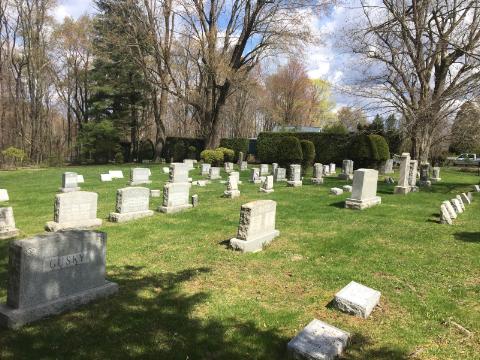
Located in the heart of DuBois, the Sons of Israel’s Hillside Cemetery dates back to a 1919 purchase from the DuBois Land Company. Jews had been in the region since the mid-1890’s. The earliest graves are recorded in 1922 including WW I veteran David Smargonsky. A lovely private setting adjacent to St. Catherine’s Cemetery, Sons of Israel has 110 graves, and like many Jewish cemeteries in small towns, plenty of ground that will go unused. The DuBois synagogue, a wonderfully spirited congregation, is the only one left in an area of Pennsylvania where coal was king, and it serves a large geographic area.
The Clearfield County coal fields were only outdone by the neighboring ones in Jefferson County, all booming at the time of the establishment of the cemetery. Synagogues were in Clearfield, Punxsutawney and DuBois, with Jewish families in Ridgway, Brookville, Reynoldsville, and all points in between.
The Shakespeare Family, longstanding in scrap metals, established a fund to care for the grounds, and it is the final resting place for nine family members. Additional burials of note include Marv Bloom, career journalist, regional sports maven, and general manager of the DuBois Courier; Louis Steinberg, noted local photographer who catalogued local buildings; and Ed Levine, valued religious leader to Sons of Israel for over forty years.
The Sons of Israel Cemetery began an association with the JCBA in 2022.
Steinfeld Cemetery — Brighton, PA

Raphael Steinfield, the first occupant of Tree of Life Cemetery, was the pioneer Jewish resident of New Brighton, and his descendants were always active in the town’s business welfare. Accompanied by his wife, Rosa, and children, Raphael Steinfield (his family later changed the spelling to Steinfeld) emigrated from Prussia in 1854, and eventually settled in New Brighton where he set up shop as a butcher. The History of New Brighton 1838-1939 states that he was a doctor of medicine in Europe. It also states: “In 1868 (one of his sons), Coleman, became a partner, and Raphael devoted most of his time to the management of a men’s clothing store which he had started in 1867 in the Steinfield Building, which was the old name for the Brighton Club headquarters”. He was also made and sold Steinfield’s medicinal products. He passed away in 1882.
In 1864, Raphael and others established the Tree of Life Synagogue in Beaver Falls, later moving to New Brighton. He also donated the land for the Tree of Life Cemetery. The majority of the burials are members of his family and occurred between 1888 and 1919, although the most recent burial appears to have been as late as 1949. By the late 1980s, the Steinfeld Cemetery had fallen into disrepair, and a group from Beaver Falls, working with a committee of the United Jewish Federation in Pittsburgh, assumed responsibility for maintaining it.
Names were taken from the damaged stones and placed on a new monument designed by Rome Monument Company and placed in the center of what remains of the cemetery. The land was cleared and seeded with grass seed. A 10-foot tall fence with a locked gate was placed around the 4 monuments. On both sides of the new monument are the well-preserved stones that belong to the Steinfeld family. That is why it was renamed Steinfeld Cemetery. History forgot that the land was originally called Tree of Life Cemetery and that the first Jewish congregation in Beaver County was called Tree of Life. Rabbi Wilkofsky and Rabbi Greene both served the community on a part time basis.
In 1997, JCBA acquired the cemetery through the board leadership of William Stark and Louis Zeiden. The cemetery is difficult to locate in the woods where it is easy to get lost. It is surrounded by private land with no right-of-way easement. It is included in a “History of Beaver County” by Reverend Joseph Bausman.
Temple Beth Shalom — Clearfield, PA
Clearfield was settled in the early 19th century and incorporated as a borough in 1840. The region became a center of lumber and coal activity as industrial operations began moving materials along the West Branch of the Susquehanna River.
A few Jewish families in Clearfield organized B’nai Levi-House of Jacob Congregation in 1917. In 1946, a new group of post World War II Jews re-organized the community into the Clearfield Jewish Council. The congregation acquired and renovated an old Pennsylvania Telephone Company building at 110 East Locust St. in 1949 and obtained a charter. The group changed its name to Temple Beth Shalom in 1965.
The congregation established Temple Beth Shalom Cemetery within Crown Crest Memorial Park between Curwensville and Hyde. Like many Jewish cemeteries in smaller towns, the original purchase far exceeded the need, as the rather large Section W holds only nineteen graves. The earliest burial date in the cemetery is 1964. Temple Beth Shalom closed around 2010, sold its synagogue building to Clearfield Arts Studio Theatre, Inc. and merged with Congregation Brit Shalom in State College. The records of the congregation are held within the Rauh Jewish History Program and Archives.
The cemetery began an association with the JCBA in 2022.
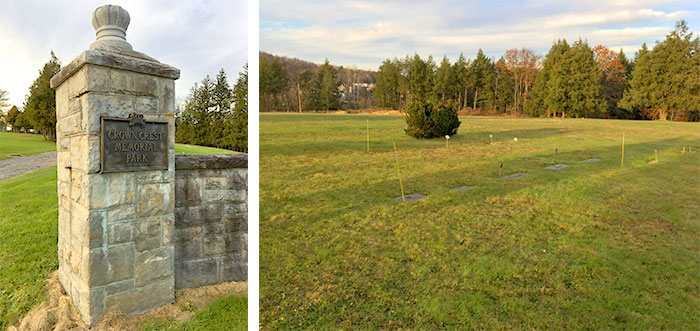
Temple Israel Memorial Park — New Castle, PA

In January 1926 a group of Jewish religious leaders of the Reform movement founded a small congregation in New Castle, Pennsylvania. In 1927 they were officially chartered as the “Temple Israel of New Castle” and decided to build a synagogue of their own. The impressive-looking Temple Israel was opened on Highland Avenue in September 1927. A dedicated burial ground, Temple Israel Memorial Park, was established on Sunrise Drive in Neshannock Township in late 1955. In 1998 the Temple Israel merged with that of the Tifereth Israel to form the new congregation of Temple Hadar Israel. The congregations each had their own cemeteries and each retained their original names after the merger. The Memorial Park became part of the JCBA in 2020. Among the notable burials at Temple Israel Memorial Park are Jack Gerson (1892-1987), the Lithuanian-born jeweler and civic leader who was very involved in the local Jewish community and Dr. Alfred Devon, WW II Bronze Star Awardee and longstanding area chiropractor.
Note: A Temple Israel member purchased a section in the Oak Pak Cemetery, the largest cemetery in Lawrence County, on Neshannock Boulevard in 1913. Not a part of the New Castle Jewish cemeteries per se, these thirty Jewish grave sites represent a portion of historic New Castle.
Tifereth Israel Cemetery — New Castle, PA
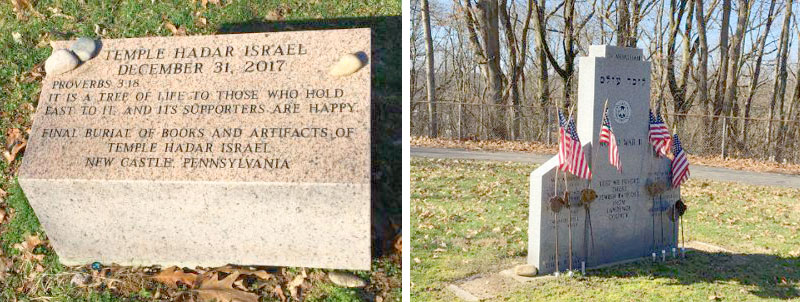
Tifereth Israel Cemetery is a Jewish burial site located in the northwest section of New Castle, Pennsylvania at the end of Maple Drive off of Wilmington Road (Route 18) and borders Jameson Memorial Hospital. A chapel stood on the grounds up until approximately 2000.
In 1897 a Chevra Kadisha (or “Holy society”), dedicated to upholding traditional burial customs was organized. In early 1898 they petitioned for the establishment of a Jewish cemetery and a lot was purchased. In July 1902 nine year-old Jacob Bennet, who had drowned in the Shenango River was the first burial.
On June 27, 1948, a memorial was dedicated to eight local Jewish servicemen killed during or just after World War II. Four were eventually interred in the cemetery. The eight men are Max Aronson, Nathan Baskind, Hyman Buntman, Emanuel Fell, Dr. Meyer Frank, Joshua Kaplan, Stanley Luxenberg, and Herbert Silverman. The memorial consists of a white wall with eight small markers with the names of the eight men.
Longtime local jeweler and Jewish community leader Jack Gerson helped unveil the memorial, while newly appointed Rabbi Jules Lipschutz officiated. Several local military veteran organizations took part in the dedication dubbed “Little Arlington”. Years later a new version of the World War II memorial, which had grown a little worn, was commissioned. Sadly, the impressive large white wall and the eight flat markers were replaced with a single gray granite memorial wall.
The new memorial contains the original inscription as well and the names of those eight men. It was dedicated during a ceremony on September 9, 2012. Itl is located near the original entrance at West Leasure Ave. and faces cemetery. Another marker commemorates the location of books and congregational artifacts buried when Temple Hadar Israel closed on December 31, 2017. A small park at the entrance to the cemetery was dedicated by Frieda Rosenblum. Tifereth Israel Cemetery became part of the JCBA in 2020.
Tiphereth Israel Cemetery
Tiphereth Israel Congregation was organized about 1890 by a small group of Orthodox Jews living in Pittsburgh’s Hill District. The congregation was chartered in 1912 and held services in a synagogue on the corner of Fullerton and Clark Street on the Hill.. Rabbi Eliyahu W. Kochin (1870-1946) served as rabbi to the congregation for almost forty years and established the Pittsburgh Jewish Seminary, later called the Hebrew Religious Academy.
The 50th anniversary in 1940 was a celebratory occasion to burn the shul’s mortgage, perhaps one of the last big events held on the Hill for the congregation.
The Tiphereth Israel Cemetery’s first burials were in 1912. Located at the top of Oakwood Street in Shaler, and adjacent to Anshe Lubovitz and New Chesed Shel Emeth, the cemetery is extremely well cared for by a dedicated group of volunteers long connected to the earliest of the shul’s families. Like many Pittsburgh shuls, the cemetery has kept these families close. With pride, and as a way to extend out their legacy, a very special donation was arranged and reported on in the local press:
“On February 17, 1950-Poale Zedeck Synagogue-“Elaborate plans for appropriate presentation of the Sifre Torah have been made and figures of international importance will be in attendance. The Sifre Torah will be accepted by the Hon. Elihu Elath, Ambassador of the State of Israel to the United States. All members of the Tiphereth Israel Congregation will present the Sifre Torali in a special ceremony to members of Hapoel Hamizrachi of Pittsburgh as representatives of Hapoel Hamizrachi in Israel. This public presentation of the Sifre Torah will be made to the following colonies of Hapoel Hamizrachi: Achdut, Bamishor, Hazorim, Alrna, Kfar Darorn, Mechora, Kiryat Shmuel, Moriah, Tirat Zvi, and Techiyah, and to the Children’s Village at Ra’anana. This is the first time that an event of this nature and of such magnitude has taken place in the Jewish community since the establishment of the State of Israel”.
With almost 1000 graves, all on a wooded hillside, the cemetery has long been one of Jewish Pittsburgh’s most interesting and tranquil. Noted burials include the Kochin Family, and they were an accomplished one. Eight children were born to the Rabbi and his wife Bessie, with Louis, an ordained rabbi becoming a leading pediatrician in the area and his sister Esther, in 1927 becoming one of Pittsburgh’s first female attorneys.
Morris Robert “Moe” Becker (February 24, 1917 – January 9, 1996) was an American professional basketball player. Son of Rabbi Hyman Becker who is also buried at TI, Moe played for Duquesne in college, part of the Iron Dukes 1940’s squads that went 51–10. He then played for the 1946-7 Boston Celtics, and a number of other teams in the early days of professional basketball. Becker returned to Pittsburgh after his playing career and served as a coach at Braddock High School.
Murray Goldstein-Specialist 5 in the US Army, Vietnam (1939-1991)
Mary Marks (1926-2021) Beloved leader of Pittsburgh’s Yiddish group that met at the JCC for many years, Mary brought joy to hundreds within her circle with her weekly calls wishing friends Good Shabbos. She was an accomplished professional in bookkeeping and accounting, and a dedicated volunteer to many organizations.
Pvt. Jacob Miller-NOTABLE MONUMENT-Section H, row 1, plot 1 CO A 16TH INF SERVED WITH HONOR IN THE WORLD WAR BORN SEPT 11 1893 AND DIED IN FRANCE NOV 18 1918 IN THE SERVICE OF HIS COUNTRY
Special recognition is given to longstanding Tiphereth Israel Cemetery Chair Harvey Wolsh and to the Gusky Family for their many decades of service.
Records of the congregation are housed at the Rauh Jewish Program and Archives.
Tiphereth Israel Cemetery became a JCBA owned cemetery in 2022.

Titusville & Oil City, PA
The 1859 oil boom in Northwestern Pennsylvania attracted a small number of Jews to parts of Crawford and Venango counties. Twenty-seven German Jews, mostly from Pittsburgh, organized the Jewish Reformed Society on August 2, 1863 and purchased ground that became B’nai Zion cemetery on Cherrytree Hill just south of Titusville. The first burial was in 1878, though perhaps earlier.
More Jews would come making Titusville, by 1880, the fourth largest Jewish population (500) in Pennsylvania. A second congregation formed almost immediately, B’nai Gemiluth Chesed which established its own cemetery in 1868, adjacent to B’nai Zion. In 1925, both Titusville congregations built a concrete road to better access their cemeteries. The synagogues have long since closed. One building was razed and the other a local print shop.
Oil City was one of the nearby towns that developed almost overnight as the oil boom continued. The Tree of Life congregation was founded in 1892. They rented rooms at the Second National Bank on Center St. until 1903, when it dedicated a synagogue at 17 Plummer St. The congregation grew in its early years and established its own cemetery in 1921, adjacent to Titusville’s B’nai Zion cemetery. Tree of Life dedicated a new “Shul-Center” on West First St in 1957. It closed in 2019 as they were down to only a handful of members.
Around 1900, a small group broke away from Tree of Life to form Sharith Israel Congregation, dedicating their own cemetery on Lines Lane in Oil City. The congregation was short lived, but the cemetery is a reminder of how big the Oil Region was at one time. The Oil Region has the distinction of being the area with more Jewish graves and fewer Jews than most anywhere in Pennsylvania. The three cemeteries on Old Route 8 south of Titusville are a testimony to the area’s pioneering history.
The cemeteries include several notable burials. The Weil Family owned and operated the Hotel deWeil in Titusville and are buried in B’nai Zion. Not all Jews were merchants. Solomon Katz’s grave is marked with the following inscription, “Cause of death, explosion of the boiler on the oil well he was operating”. Phil Wein, former Clarion County District Attorney and part of the large Clarion Wein Family is buried in the Tree of Life section. An 1892 flood and fire on Oil Creek resulted in the death of four Jewish residents, all buried in the Titusville Jewish Cemeteries.
The region’s history lives on through a Torah which took a circuitous route from Europe to Titusville to Oil City and now to the Hillel at Haverford College. The Oil Region’s Jewish cemeteries became affiliated with the JCBA in 2020 through the Bridge Builders Community Foundation that serves Venango, Clarion, Forest and Jefferson Counties.

Titusville (left, center) and Oil City (right)
Torath Chaim Cemetery — Hampton Township, PA
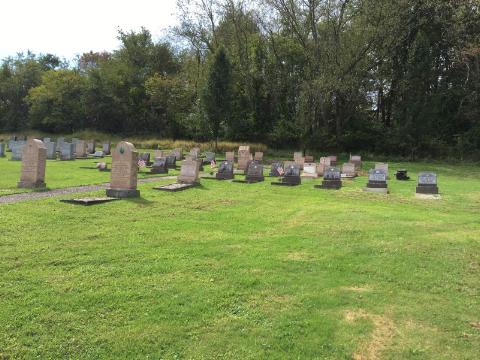
Torath Chaim Anshe Sfard Congregation was organized in 1927 around the spiritual leadership of Rabbi Jacob Hurwitz, in partnership with his brother Rabbi Moshe Shapiro, and others in their close-knit circle.
Rabbi Hurwitz established Sephardic rituals and traditions amongst the Yiddish speaking Russian immigrants to the East End. Torath Chaim began in the Hill District and then moved to 728 North Negley Avenue, where it remained until it closed in the 2004. At that time, it was the last congregation in the “‘Stend”.
And what a home it was. It spawned a fraternal spirit and camaraderie that has lasted for generations. English was a second language. Even after its founding rabbi left, the congregation continued to grow, with a post-WWII remodel that allowed seating for 700. Shamai Shapiro, the congregation’s last Torah reader, kept Torath Chaim going, passing away in 1994.
The congregation’s cemetery dates back to 1928 and is located along Wickline Road in Hampton Township. Ledger books recorded through the mid-1960’s, and housed at the Rauh Jewish Archives, are written in Yiddish. The earliest graves predate the congregation. Well cared for by a dedicated committee led by Moshe Shapiro’s great-great-grand-daughter, Kohenet Keshira haLev Fife, the Torath Chaim Cemetery features a monument dedicated to the Shapiro Family.
Central to the Torath Chaim and wider Pittsburgh Jewish community, is the Shapiro Family, who founded the National Record Mart (NRM). Founded in 1937, at its peak, NRM was one of the largest record store chains in the United States.
Also laid to rest at Torath Chaim Cemetery are members of five generations of the extended Shapiro family.
Torath Chaim Cemetery began an association with the JCBA in 2022.
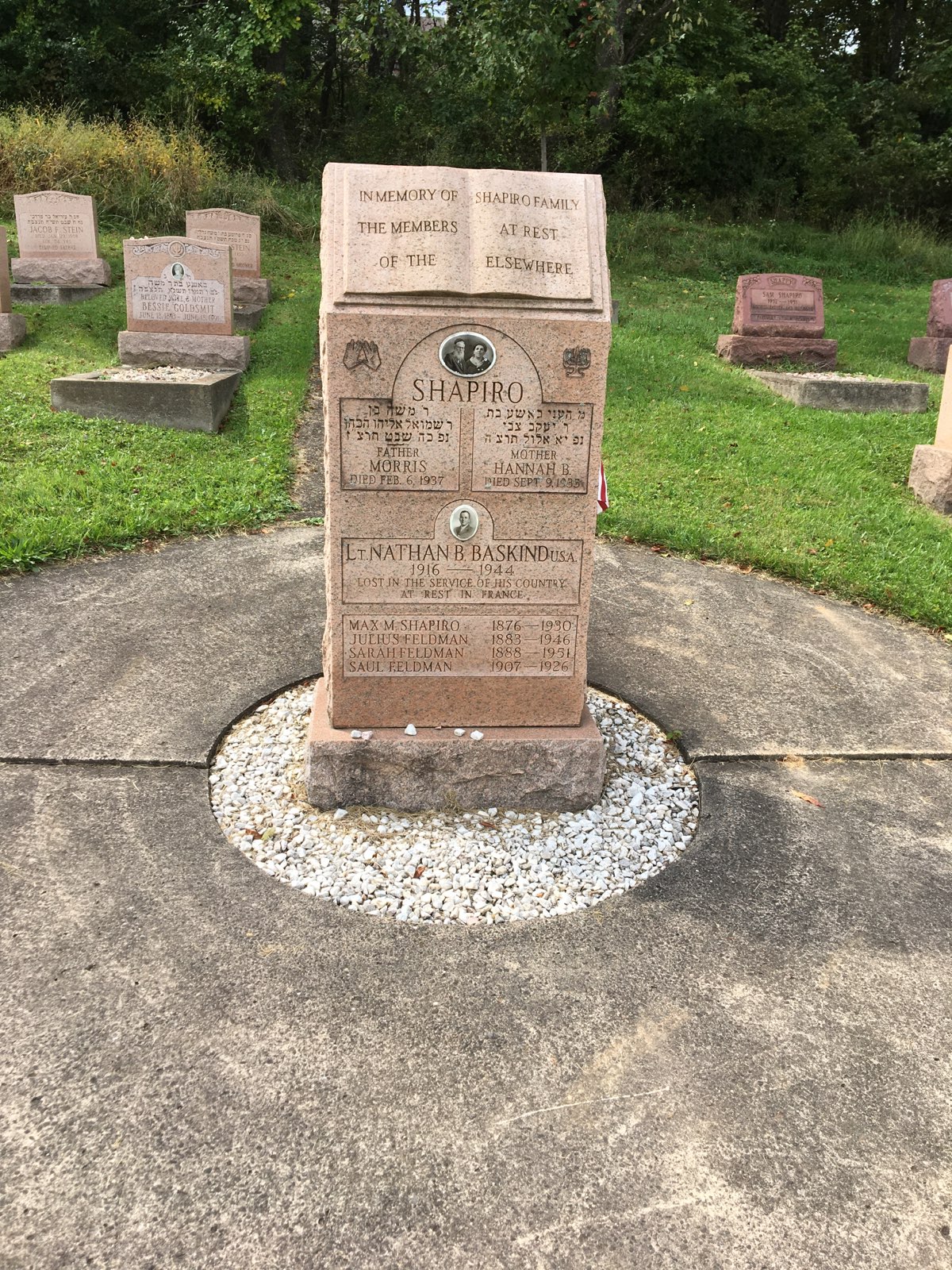
Tree of Life Cemetery — Sharpsburg, PA
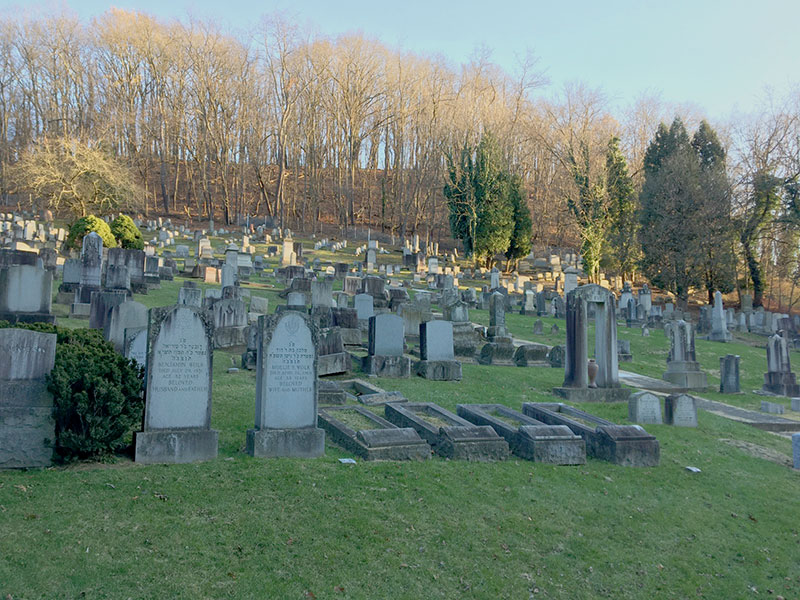
An initial group of sixteen members met in the home of Gustavus Grafner to form Etz Chaim. Then called by its Hebrew name, the Tree of Life was chartered in 1865 and acquired land for use as a cemetery during its first year. Located on Kittanning Pike northeast of the town of Sharpsburg, Pittsburgh’s third oldest Jewish cemetery holds 1350 graves, many from the region’s earliest families. Originally an Orthodox congregation, most of the early members were from Eastern Europe.
Like many Pittsburgh cemeteries it sits on a steep hillside, and is situated just below O’Hara Township’s Meadow Heights Park. As the congregation moved from its founding on Fourth and Ross, to Grant, to Oakland’s Craft Avenue, and to Shady and Wilkins in the 1950’s, and developed a Memorial Park in Franklin Park at that time, the Sharpsburg cemetery stands as a testimony and tangible connection to the Tree of Life’s early and proud history. It is still an active cemetery.
Features of note include numerous preserved family section markers and monuments, a 1985 War Veteran’s Memorial, and the largest collection of nineteenth century Jewish graves in Western Pennsylvania.
A recent restoration funded by an exceedingly generous and caring donor and in cooperation between the Tree of Life-Or L’Simcha and the JCBA has taken place in 2022, and will continue.
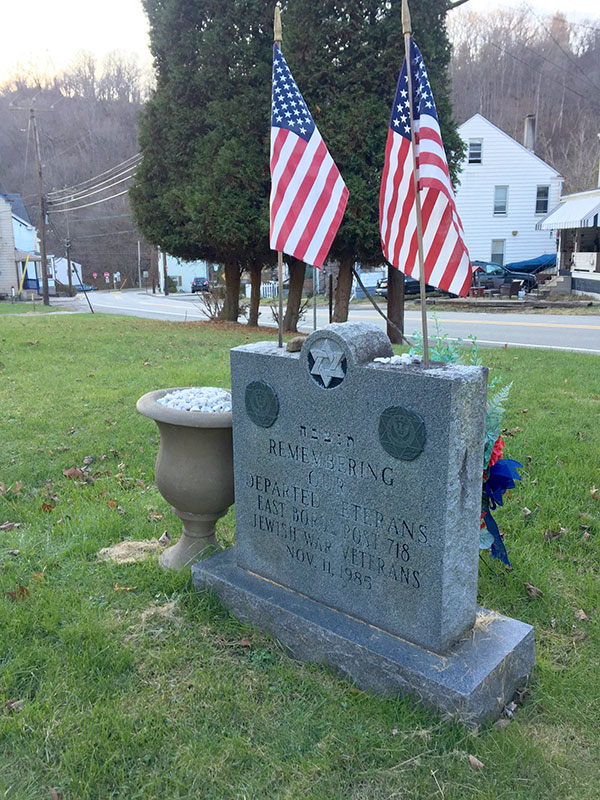
Tree of Life Memorial Park — Franklin Park, PA
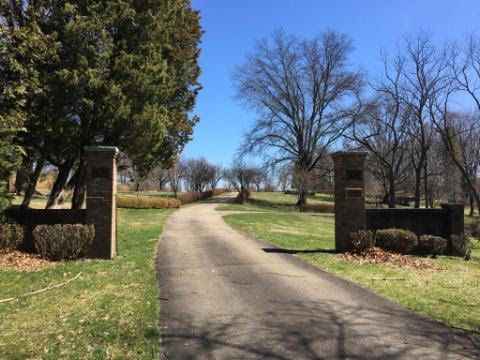
An initial group of sixteen members met in the home of Gustavus Grafner to form Etz Chaim. Then called by its Hebrew name, the Tree of Life was chartered in 1865. Originally an Orthodox congregation, most of the early members were from Eastern Europe. As the congregation moved from its founding on Fourth and Ross, to Grant, to Oakland’s Craft Avenue, and to Shady and Wilkins in the 1950’s, the growing congregation needed additional ground beyond the cemetery established in 1873 in Sharpsburg.
Land was purchased in the North Hills suburb of Franklin Park along Reis Run Road in 1948, and the first interment was that of Herman Goldman in 1950. This lovely manicured setting is the final resting place for over 1000 graves, with mostly flat markers, and a dedicated section for monuments. Like many cemeteries, Tree of Life Memorial Park is full of large family sections: Gersons, Gordons, Goulds, Lenchners, Segals, and Segalls, and others.
Tree of Life Memorial Park is the final resting place for beloved Tree of Life community members Joyce Fienberg, Rose Mallinger, Cecil Rosenthal, and David Rosenthal. In addition, notable burials include:
Dave Dinkin—Longstanding executive director of the Tree of Life Congregation
Aviva Katz, M.D.—University of Pittsburgh professor, and leader in the field of pediatric bioethics
Meyer Mintz—Early area UJA fundraising professional who worked with everyone from Golda Meir to David Ben-Gurion, pre and post 1948
Sam Nover—Sports announcer remembered for many years in Pittsburgh, and for the last interview held with Roberto Clemente
Ruth and Lester Zittrain—They represented some of the 1970’s Steelers in their contract negotiations in their lengthy Allegheny County legal careers, and endowed the Zittrain Garden at the Tree of Life Building.
The Tree of Life, with its active Cemetery Committee, works with the JCBA on both the Memorial Park and the Sharpsburg cemetery.
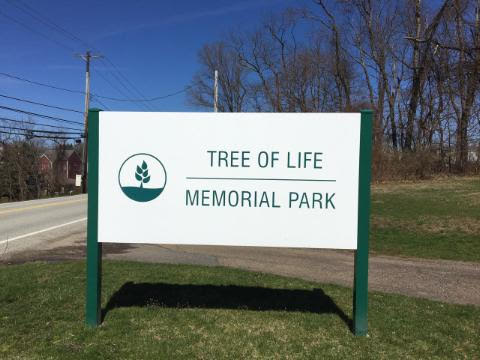
Workmen’s Circle Cemetery #45

The Workmen’s Circle (Arbeiter Ring) Branch #45 was established in Pittsburgh in 1904. The socialist fraternal organization, whose original members were from Eastern Europe, was first organized in New York in 1892 to promote Jewish culture and to support Jewish labor and unions. Advocating “equal pay and equal human rights,” the Workmen’s Circle was associated with the Jewish Labor Committee. Workmen’s Circle also founded secular Yiddish schools and camps. The national organization still exists as a progressive organization.
At one time, Workmen’s Circle had four branches in Pittsburgh and six outlying branches in the Pennsylvania, Ohio, and West Virginia tri-state area. The organization supported Jewish and non-Jewish labor, including coal miners, to whom they distributed food during strikes in 1919, 1921, and 1923, and steelworkers. By 1955, only two branches were left. Workmen’s Circle #45 disbanded in 1983. Responsibility for the organization’s cemetery was assumed by the Jewish Cemetery and Burial Association in 2009.
Workmen’s Circle Cemetery #975
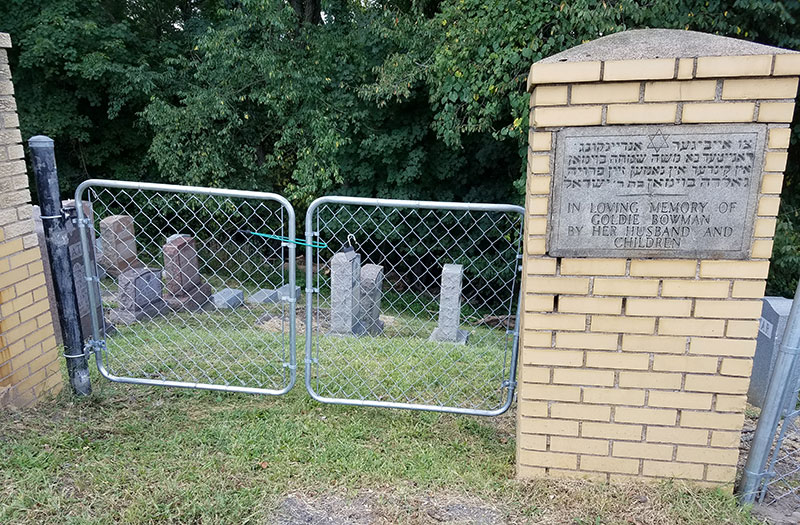
The original Workmen’s Circle #975 was separated into two distinct sections, one for the Communists and one for the Socialists. This cemetery, prior to 1997, was one of the first to join in with the Jewish Cemetery and Burial Association.

